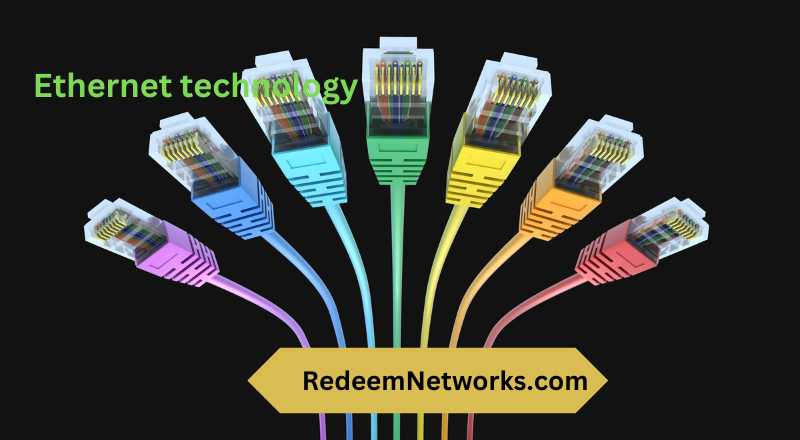Originally developed by Xerox in the 1970s .Its standardized by the Institute of Electrical and Electronics Engineers (IEEE). Ethernet technologies in computer networks
This technology refer to the various standards and protocols used for wired local area networks LAN. To facilitate data communication between devices within a limited area .Here are some key Ethernet technologies.
Contents
Ethernet Standards

- Ethernet Standards: These are the guidelines and specifications that define how Ethernet operates. Common standards include:
- IEEE 802.3: The overarching standard that defines the Ethernet protocol.
- Ethernet II (DIX): The most commonly used Ethernet frame format.
- Fast Ethernet (IEEE 802.3u): Supports data transfer rates of up to 100 Mbps.
- Gigabit Ethernet (IEEE 802.3ab): This supports and Offers speeds up to 1 Gbps.
- 10-Gigabit Ethernet (IEEE 802.3ae): Provides speeds up to 10 Gbps.
- Ethernet Cables:
Different types of Ethernet cables are used to connect devices. These include:- Twisted Pair (Cat 5, Cat 5e, Cat 6, Cat 6a, Cat 7): Commonly used for Ethernet connections in homes and businesses..
- Ethernet Switches: These devices are used to connect multiple Ethernet devices within a LAN. Switches use MAC addresses to efficiently forward data only to the intended recipient.
- Ethernet Hub :Data sent to a hub is broadcast to all devices connected to it.
- Power over Ethernet (PoE): This technology allows Ethernet cables to carry electrical power alongside data, eliminating the need for separate power cables for certain devices like IP cameras, wireless access points, and VoIP phones.
- Ethernet over Coax (EoC): Enables the transmission of Ethernet data over existing coaxial cables, often used in environments where upgrading to newer cabling infrastructure is not feasible.
- Ethernet over Powerline (EoP): Transmits Ethernet data signals over standard electrical wiring, providing a network connection through power outlets.
- Ethernet Protocols: TCP/IP (Transmission Control Protocol/Internet Protocol) which enables data transmission and reception between devices over an Ethernet network.
Why we use Ethernet ?
Ethernet is widely used for several reasons:
- Ubiquity: Ethernet has become the standard for local area networking. It’s widely adopted and supported by a vast array of devices, making it a go-to choice for connecting computers, printers, servers, and other networked devices.
- Speed: From the initial 10 Mbps Ethernet to modern iterations offering speeds up to 100 Gbps, Ethernet has continually evolved to meet the demand for faster data transfer rates.
- Scalability: Ethernet technology supports networks of various sizes, from small office setups to extensive enterprise-level networks. It’s easily scalable by adding switches, routers, or additional cabling infrastructure.
- Cost-effectiveness: This cost-effectiveness contributes to its widespread use.
- Compatibility: Ethernet is highly compatible with other networking technologies. It can seamlessly integrate with different protocols and technologies, enabling interoperability between various devices and systems.
- Security: Ethernet supports various security protocols and measures (like VLANs, MAC address filtering, and encryption) that help in securing data transmission within a network.
- Ease of Setup and Management: Ethernet networks are relatively easy to set up and manage. Tools for network monitoring, configuration, and troubleshooting are widely available, simplifying the management of Ethernet-based networks.
- Flexibility: Ethernet allows for various types of cabling, including copper and fiber optic, accommodating different network infrastructures and needs.